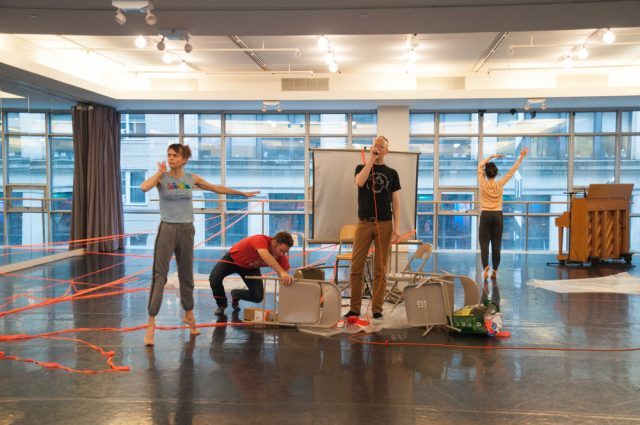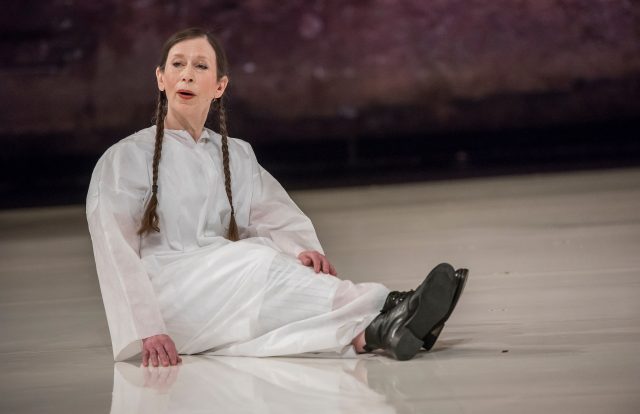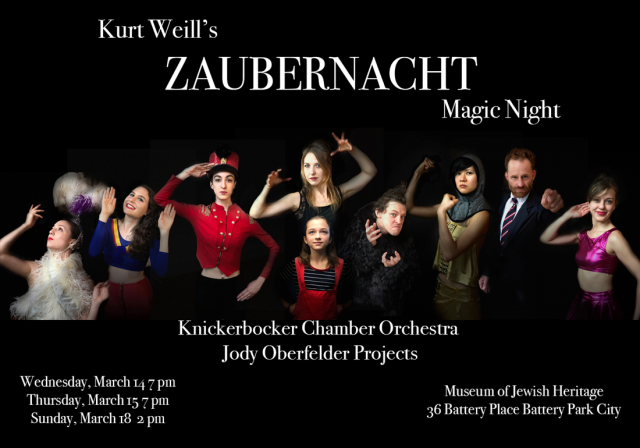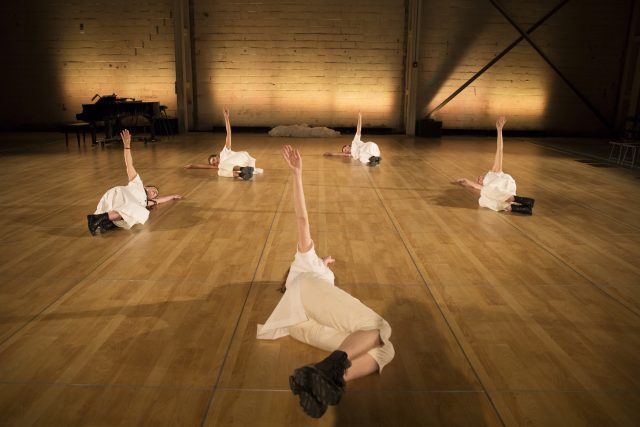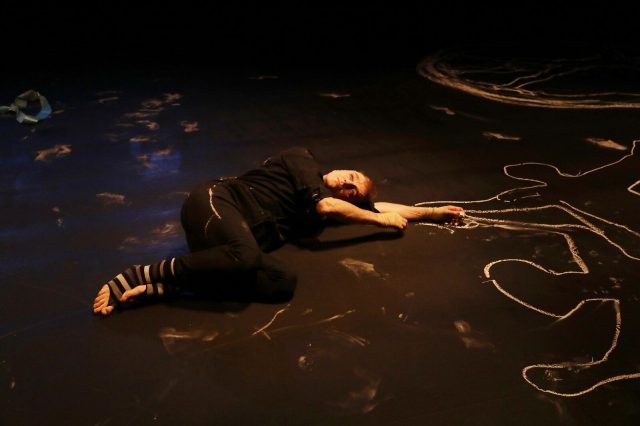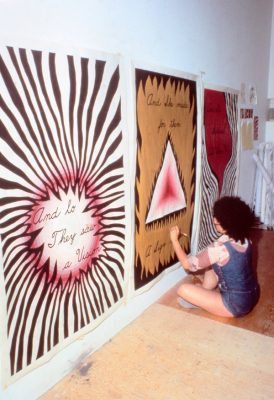
Joanna Kotze explores space, time, connection, collaboration, and communication in What will we be like when we get there at New York Live Arts (photo by Carolyn Silverman)
New York Live Arts
219 West 19th St. between Seventh & Eighth Aves.
March 28-31, $15-$25, 7:30
212-924-0077
newyorklivearts.org
www.joannakotze.com
It’s not exactly clear when Joanna Kotze’s What will we be like when we get there begins and ends — at a talkback moderated by Okwui Okpokwasili following the March 29 performance, one audience member said she wasn’t sure if the show was still going on. Such is the mystery, magic, madness, and mayhem of this world premiere, taking place at New York Live Arts through March 31. South Africa-born, Brooklyn-based dancer, choreographer, and teacher Kotze kicks off the evening by pointing out the exits, telling the audience to turn off their cell phones, and describing the origins of this collaboration with visual artist Jonathan Allen, sound designer, composer, and musician Ryan Seaton, and dancer and choreographer Netta Yerushalmy. However, Kotze’s speech starts hesitating as she drifts toward the floor, holding the microphone stand in awkward positions. Yerushalmy comes out and lies down on her side at the front of the stage, facing the back. Seaton pushes a heavy piano back and forth, perhaps a reference to Luis Buñuel and Salvador Dalí’s Un Chien Andalou. Allen lays orange gaffer’s tape from a ladder onto other objects as well as on the floor, creating new physical spaces in the air and on the ground. Seaton (Callers) plays electronic music from a laptop, then runs to a saxophone or grabs a clarinet and plays it. Allen (whose related paintings, “Knowing That Your House Is on Fire,” are on view in the lobby) gets continually knocked over by Yerushalmy (Paramodernities), who, after a long period hiding her face, finally reveals herself to the crowd but later teases it with potential nudity. Kotze jumps onto an empty chair in the audience and takes a breather on the steps. Allen collects nearly everything not bolted down — folding chairs, a cart, monitors, mechanical equipment — and moves it to the middle of the stage, as if a Wizard of Oz-like cyclone is scooping up whatever is in its path. For seventy-five minutes, with the house lights on, the four friends engage in a series of set pieces exploring connection and communication in a stormy world, incorporating large doses of absurdity and humor. Bessie winner Kotze (FIND YOURSELF HERE; It Happened It Had Happened It Is Happening It Will Happen) takes advantage of every part of the New York Live Arts Theater, immersing the audience in the vast unpredictability of life in the twenty-first century through an exhilarating controlled chaos. The quartet eventually stands together and bows, but a day later I’m still not sure it’s over, as Kotze alludes to in the title of this thrilling work.
